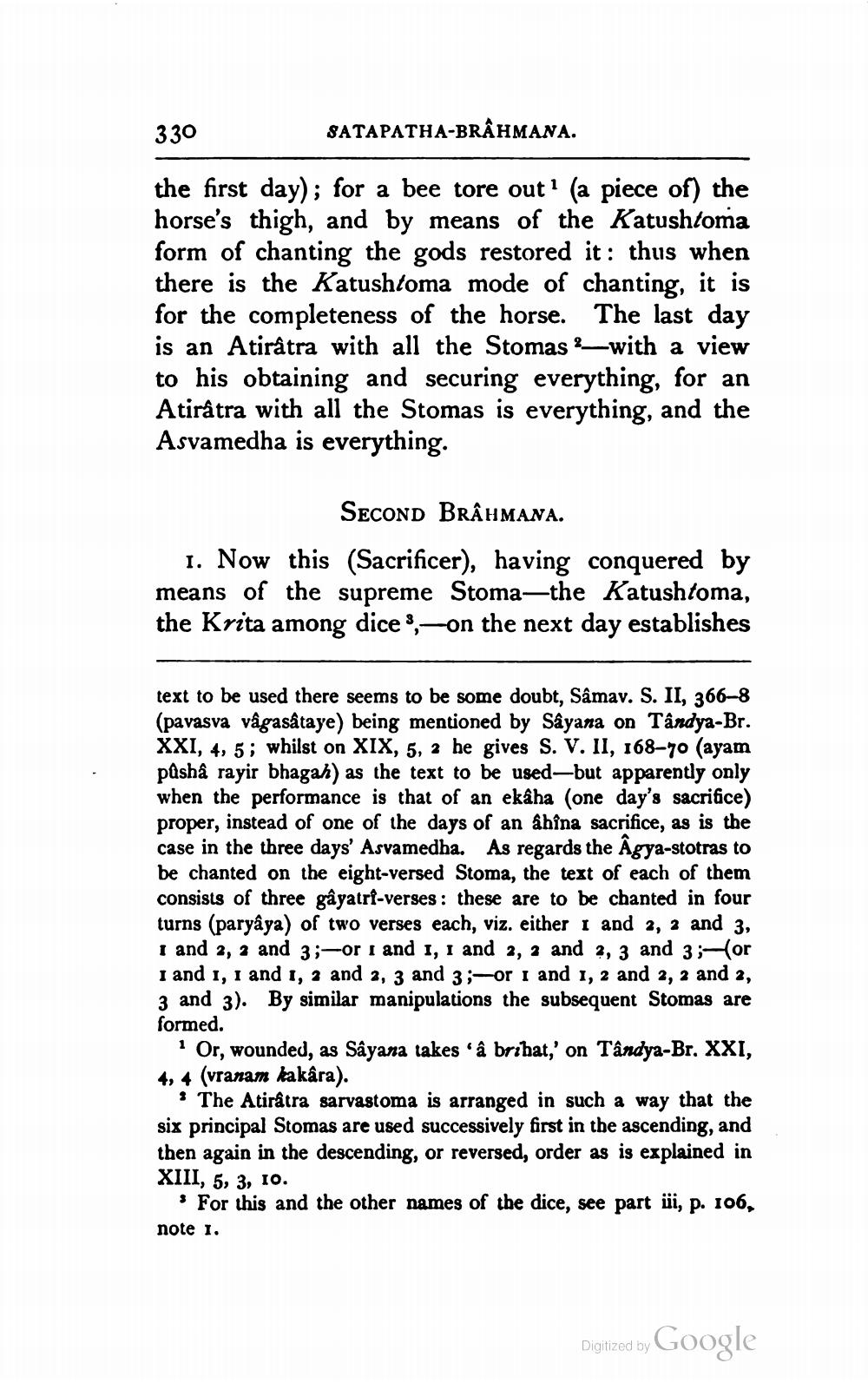________________
330
SATAPATHA-BRÂHMANA.
the first day); for a bee tore outi (a piece of) the horse's thigh, and by means of the Katushtoma form of chanting the gods restored it: thus when there is the Katushtoma mode of chanting, it is for the completeness of the horse. The last day is an Atirâtra with all the Stomas with a view to his obtaining and securing everything, for an Atirâtra with all the Stomas is everything, and the Asvamedha is everything.
SECOND BRAHMANA. 1. Now this (Sacrificer), having conquered by means of the supreme Stoma—the Katushtoma, the Krita among dice *,-on the next day establishes
text to be used there seems to be some doubt, Sâmav. S. II, 366-8 (pavasva vågasätaye) being mentioned by Sayana on Tandya-Br. XXI, 4, 5; whilst on XIX, 5, 2 he gives S. V. II, 168-70 (ayam pasha rayir bhagal as the text to be used-but apparently only when the performance is that of an ekâha (one day's sacrifice) proper, instead of one of the days of an âhîna sacrifice, as is the case in the three days' Asvamedha. As regards the Agya-stotras to be chanted on the eight-versed Stoma, the text of each of them consists of three gayatri-verses: these are to be chanted in four turns (paryâya) of two verses each, viz. either 1 and 2, 2 and 3, 1 and 2, 2 and 3 ;-or i and 1, 1 and 2, 2 and 2, 3 and 3 ;-or I and 1, 1 and 1, 2 and 2, 3 and 3 ;-or i and 1, 2 and 2, 2 and 2, 3 and 3). By similar manipulations the subsequent Stomas are formed.
Or, wounded, as Sâyana takes 'â bribat,' on Tândya-Br. XXI, 4, 4 (vranam kakâra).
• The Atirâtra sarvastoma is arranged in such a way that the six principal Stomas are used successively first in the ascending, and then again in the descending, or reversed, order as is explained in XIII, 5, 3, 10.
'For this and the other names of the dice, see part üi, p. 106, note I.
Digitized by Google




